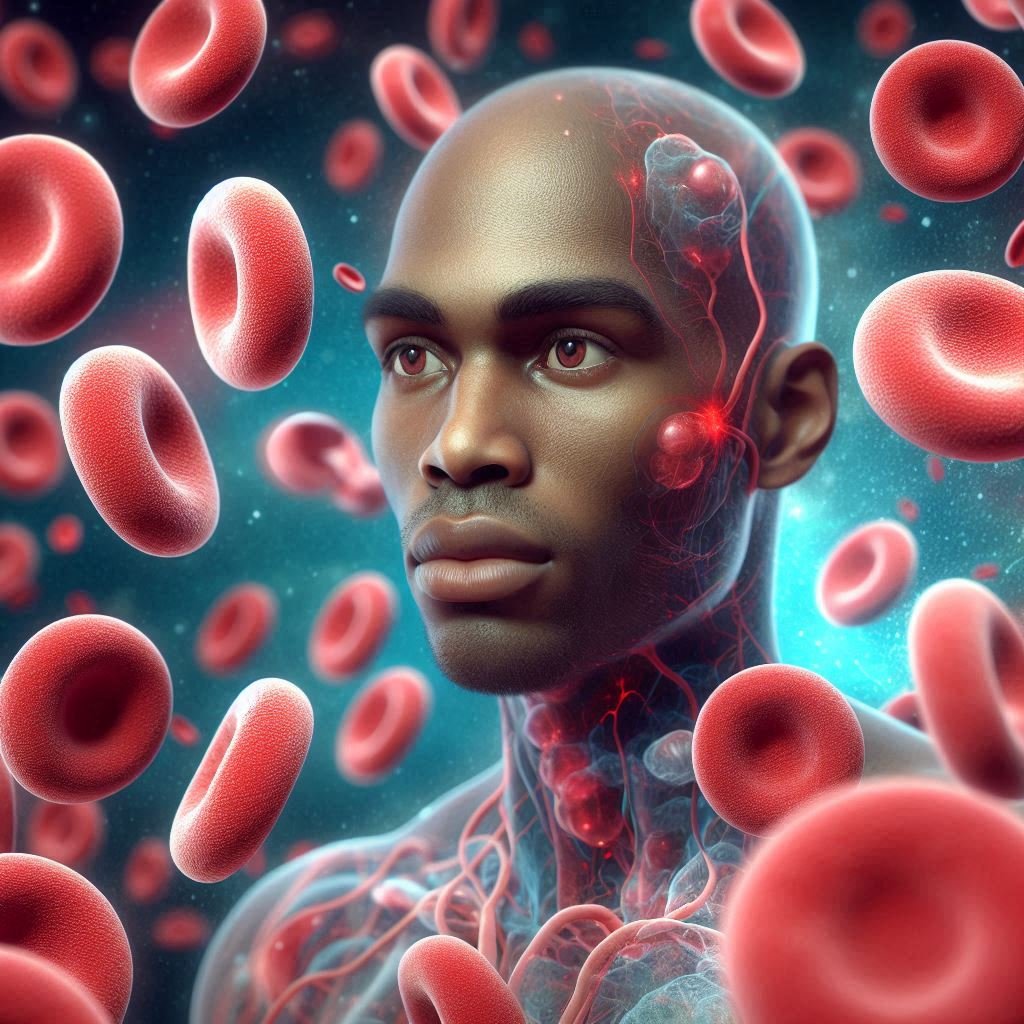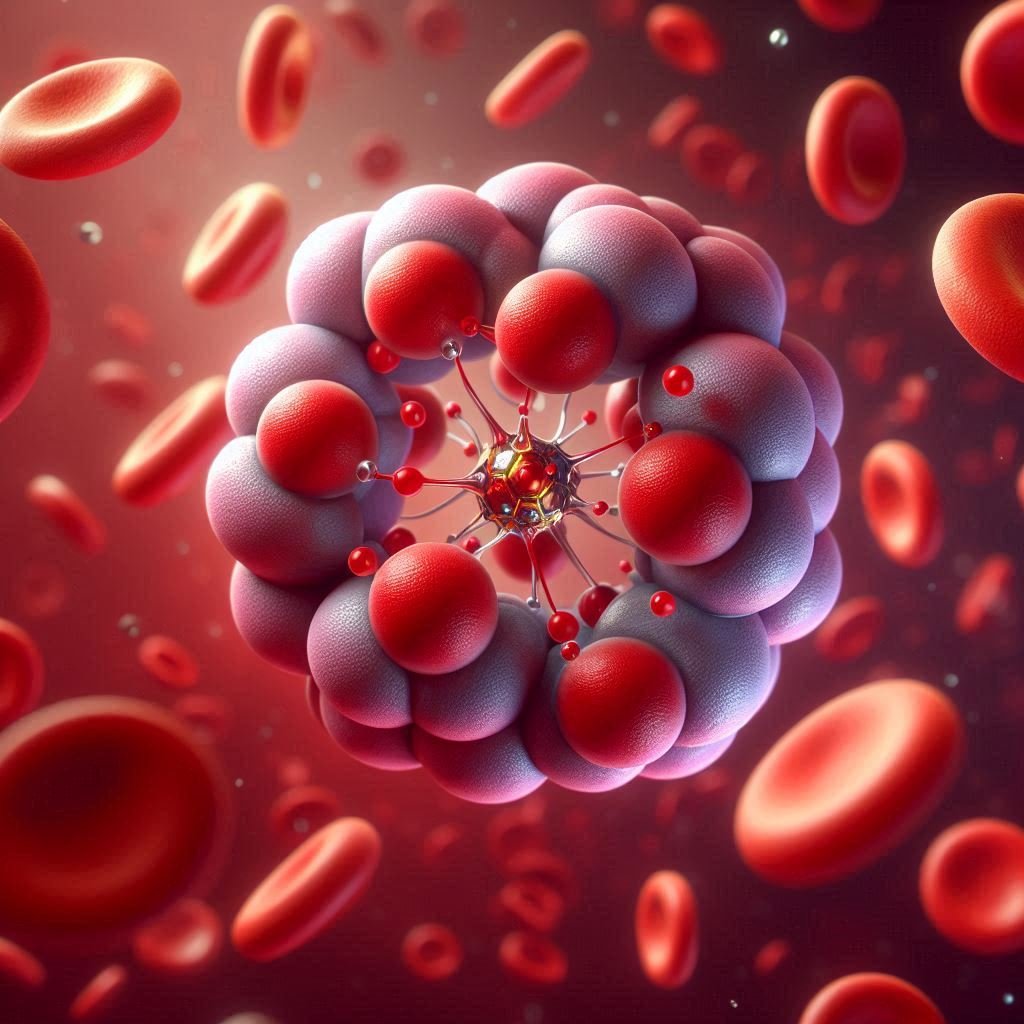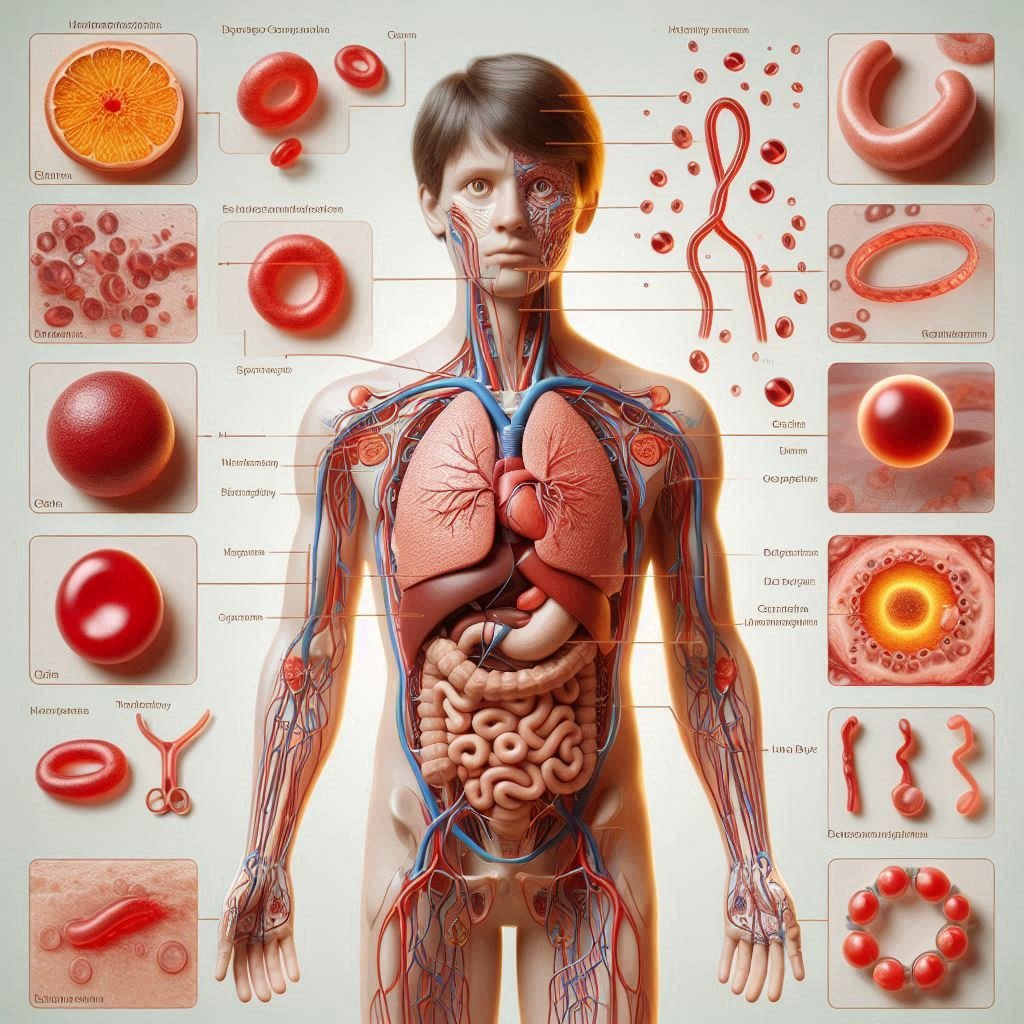Introduction

Thalassemia is a genetic disorder that affects the production of hemoglobin, the protein in red blood cells responsible for carrying oxygen throughout the body. Hemoglobin is made up of two types of protein chains: alpha and beta. It results from mutations in the genes responsible for producing these protein chains, leading to reduced hemoglobin production and anemia.
It is an autosome linked recessive blood disease transmitted from parents to the offspring when both the partners are unaffected carrier for the gene or heterozygous condition. This condition affects millions of people worldwide and significantly impacts their quality of life.
Types-
- Alpha thalassemia: This occurs when there is a defect in the genes responsible for making alpha globin chains, which are components of hemoglobin. Depending on the number of affected genes, it can be classified as:

- Silent carrier: One gene affected.
- Alpha thalassemia minor: Two genes affected.
- Hemoglobin H disease: Three genes affected.
- Hydrops fetalis: Four genes affected. This is the most severe form and usually results in stillbirth or death shortly after birth.
2. Beta thalassemia: This occurs when there is a defect in the genes responsible for making beta globin chains, which are components of hemoglobin. It has various forms, including
- minor: This is the mildest form, where the patient is usually an asymptomatic carrier.
- intermedia: This form is more severe than thalassemia minor but less severe than major. Patients may require occasional blood transfusions.
- major (also known as Cooley’s anemia): This is the most severe form of beta thalassemia, where the patient requires regular blood transfusions and ongoing medical care.
Symptoms
- Mild Thalassemia
- Often asymptomatic, meaning individuals may not experience any symptoms.
- Mild anemia, which may cause fatigue or weakness, especially during periods of increased activity.
- Pale skin.
- Yellowish tint to the eyes and skin (jaundice), especially in cases of hemolysis (destruction of red blood cells).

2. Severe Thalassemia
- Severe anemia, which can lead to:
- Fatigue, weakness, and shortness of breath.
- Pale or yellowish skin.
- Rapid or irregular heartbeat (palpitations).
- Poor growth and delayed puberty in children.
- Enlarged spleen (splenomegaly) or liver (hepatomegaly).
- Bone deformities, especially in the face and skull, due to increased production of bone marrow to compensate for anemia.
- Dark urine (due to increased breakdown of red blood cells).
- Gallstones.
- Leg ulcers (in severe cases).
- Facial bone deformities and growth failure in severe cases of untreated thalassemia major, particularly Cooley’s anemia.
Complications in Severe Cases:
- Iron overload: Because of the need for frequent blood transfusions in severe cases, there can be an accumulation of iron in the body, leading to organ damage, especially in the heart, liver, and endocrine glands.
- Infections: Due to the weakened immune system caused by both the disease itself and treatments such as splenectomy (removal of the spleen).
- Heart problems: Including arrhythmias, heart failure, and cardiomyopathy, particularly in cases of untreated severe thalassemia major.
- Osteoporosis: Weakening of the bones due to iron overload and hormonal imbalances.
Causes
Genetic Inheritance: it is inherited in an autosomal recessive pattern, meaning that a person must inherit two copies of the defective gene (one from each parent) to develop the disorder. If an individual inherits only one copy of the defective gene, they are considered carriers of the trait and are usually asymptomatic carriers . When both parents are carriers, there’s a 25% chance with each pregnancy that their child will inherit two copies of the defective gene.

Alpha Thalassemia: Mutation in the genes that code for alpha globin chains on chromosome 16 are responsible for alpha thalassemia. These mutation can result in reduced or absent production of alpha globin chains, leading to ineffective hemoglobin formation.
Beta Thalassemia: Mutation in the genes that code for beta globin chains on chromosome 11 are responsible for beta thalassemia. These mutation can result in reduced or absent production of beta globin chains, leading to ineffective hemoglobin formation.
De Novo Mutations: In rare cases, it may occur due to spontaneous mutations in the genes responsible for hemoglobin production, rather than being inherited from parents.
Treatment
Blood Transfusions: Individuals with moderate to severe thalassemia, especially thalassemia major, often require regular blood transfusions to maintain a sufficient level of healthy red blood cells. Transfusions help alleviate anemia symptoms and prevent complications associated with low hemoglobin levels.

Iron Chelation Therapy: Since repeated blood transfusions can lead to iron overload in the body (hemochromatosis), iron chelation therapy is often necessary to remove excess iron. Chelating agents such as deferoxamine, deferiprone help bind excess iron and facilitate its excretion through urine or stool.
Folic Acid Supplementation: Folic acid (folate) supplements may be prescribed to individuals with it to support red blood cell production and prevent folate deficiency, which can occur due to increased red blood cell turnover.
Bone Marrow Transplantation: For individuals with severe thalassemia who have a suitable donor, bone marrow transplantation (also known as hematopoietic stem cell transplantation) can offer a potential cure. This procedure involves replacing the patient’s abnormal stem cells with healthy donor stem cells, which can produce normal red blood cells.
Gene Therapy: Experimental gene therapy approaches are being investigated as potential treatments for it. These therapies aim to correct the underlying genetic defect responsible by introducing functional copies of the affected genes into the patient’s cells.
Impact on day to day life
Physical Health:
- Anemia: Thalassemia leads to chronic anemia, which can cause fatigue, weakness, shortness of breath, and pale skin.
- Complications: Severe forms of thalassemia, especially thalassemia major, can lead to complications such as bone deformities, organ damage (e.g., heart, liver), iron overload, susceptibility to infections, and endocrine disorders.
Emotional Well-being:
- Psychological Impact: Living with a chronic condition like it can lead to stress, anxiety, depression, and feelings of isolation, especially for individuals who require frequent medical treatments and face uncertainties about their health.
- Coping Strategies: Patients and their families may need to develop coping strategies to deal with the emotional challenges associated with it, such as seeking support from healthcare providers, family, friends, and support groups.
Social Impact:

- Stigma and Discrimination: Due to misconceptions about thalassemia, individuals with the condition may face stigma, discrimination, and social isolation, particularly in communities where there is limited awareness and understanding of the disorder.
- Educational and Employment Challenges: This disorder may impact a person’s ability to attend school regularly, participate in physical activities, or maintain consistent employment due to the need for ongoing medical treatments and frequent hospital visits.
- Family Dynamics: It can affect family dynamics and relationships, as caregivers may experience stress and financial strain while supporting a family member with thalassemia.
Living with thalassemia

1 . Follow a healthy diet rich in iron and other essential nutrients. 2. Avoid activities that may increase the risk of complications, such as contact sports. 3. Stay up-to-date with medical appointments and treatment plans. 4. Seek emotional support from family, friends, or support groups.

FAQ (frequently asked questions)
Q. What causes thalassemia?
Ans. It is primarily caused by mutation in the genes responsible for producing alpha or beta globin chains, which are components of hemoglobin. These mutation are inherited in an autosomal recessive pattern.
Q. What are the types of thalassemia?
Ans. The main types of it include alpha thalassemia and beta thalassemia. Each type has different subtypes and severity levels, ranging from mild to severe.
Q. What are the symptoms of thalassemia?
Ans. Symptoms of it can vary depending on the type and severity of the condition but may include fatigue, weakness, shortness of breath, pale skin, jaundice, enlarged spleen or liver, and bone deformities.
Q. How is thalassemia diagnosed?
Ans. It is typically diagnosed through blood tests that measure hemoglobin levels and identify abnormal red blood cell morphology. Genetic testing may also be used to confirm the diagnosis and determine the specific type of thalassemia.
Q. What is the treatment for thalassemia?
Ans. Treatment for it may include blood transfusions to alleviate anemia, iron chelation therapy to manage iron overload, folic acid supplementation, bone marrow transplantation for severe cases, and supportive care to address complications and improve quality of life.
Q. Can thalassemia be cured?
Ans. While there is currently no cure for it, treatments such as bone marrow transplantation offer a potential cure for some individuals with severe forms of the condition.
Q. What is the life expectancy for individuals with thalassemia?
Ans. Life expectancy for individuals with this disorder has significantly improved in recent years due to advances in medical care and treatment options. With appropriate management, many individuals with it can live long and fulfilling lives.
Q. Is thalassemia preventable?
Ans. It is a genetic disorder, so it cannot be prevented entirely. However, genetic counseling and prenatal testing can help identify individuals who are carriers of thalassemia traits and reduce the risk of passing the condition to future generations.
Conclusion
It is a complex genetic disorder that requires comprehensive management to ensure the best possible outcomes for patients. Through early diagnosis, appropriate treatment, and ongoing support, individuals with thalassemia can lead fulfilling lives despite the challenges posed by the condition. Continued research into new treatment modalities, including gene therapy, offers hope for improved therapies and eventually a cure for it.
Table of Contents
how phenylketonuria affects the individual ?
Go and visit dusearchit.in and get more knowledge about others topics

Pingback: How dangerous is down syndrome ? symptoms, cure... (2024)
As someone still navigating this field, I find your posts really helpful. My site is QH6 and I’d be happy to have some experts about Article Marketing like you check it and provide some feedback.
Thanks a lot!!!!!!!